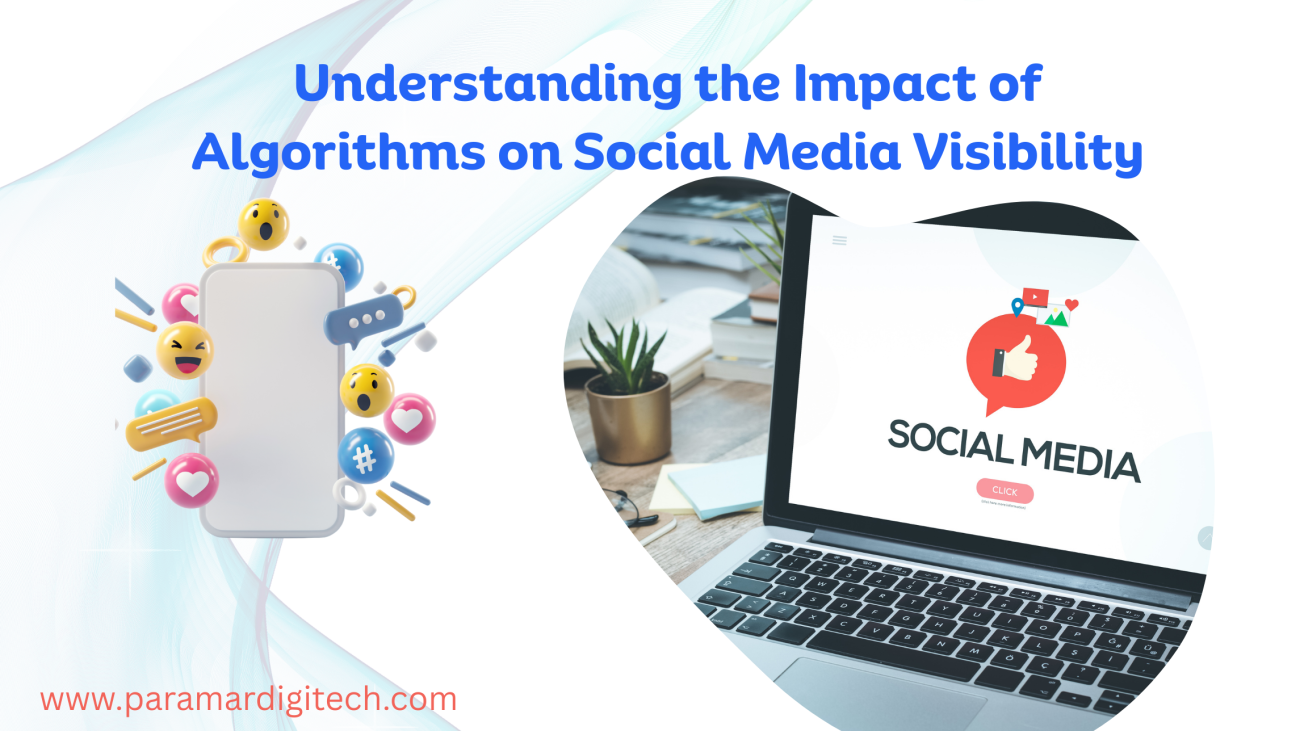In the ever-evolving digital world, social media platforms have become more than just networking spaces they are vital tools for businesses, brands, and professionals to connect with audiences and build visibility. Yet, the visibility of content is no longer straightforward. Algorithms now play a dominant role in deciding what users see, creating new challenges for marketers who want their content to shine organically. To stay ahead, it’s important to understand how algorithms shape social media visibility and how strategies can be adapted to overcome these challenges.
What Do Social Media Algorithms Do?
Social media algorithms are rule-based systems designed to rank and distribute content based on user behavior. Their goal is to ensure users spend more time on the platform by showing them content that is relevant, engaging, and likely to spark interaction. For example:
- Facebook prioritizes posts from friends, family, and active communities, while limiting reach for generic business content.
- Instagram boosts posts that drive quick engagement (likes, saves, comments, and shares) and relevance to the user’s past activity.
- LinkedIn highlights professional insights and posts that trigger meaningful conversations within a user’s network.
These algorithmic filters make competition for visibility tougher than ever. Businesses cannot rely on posting alone they must adapt to the ever-changing rules of engagement.
The Decline of Organic Reach
A few years ago, businesses could rely heavily on organic reach. A post on Facebook or Instagram would easily appear in most followers’ feeds. But today, organic reach is shrinking rapidly. Social media platforms encourage paid advertising, and as a result, brands must work harder to maintain visibility without investing heavily in ads.
For instance, a company focusing on digital marketing in Hubli must find creative ways to engage the local audience while dealing with algorithmic restrictions. Similarly, businesses practicing digital marketing in Dubai face fierce competition, where high-quality visuals, targeted ads, and bilingual or multilingual campaigns become critical. Both Hubli and Dubai markets illustrate how localized approaches are essential in countering algorithmic limitations.
Smart Strategies to Tackle Algorithm Challenges
Despite declining organic reach, businesses can still grow visibility by applying effective strategies. Here are some practical approaches:
- Craft Compelling Content – Authentic, creative, and audience-centric content always performs better. Use stories, tutorials, testimonials, and behind-the-scenes content to grab attention.
- Prioritize Video Formats – Platforms like Instagram Reels, YouTube Shorts, and TikTok are designed to push video content to larger audiences.
- Focus on Engagement Signals – Encourage users to comment, share, and interact. Polls, quizzes, and open-ended questions help spark conversations.
- Maintain Posting Consistency – Regular posting improves algorithmic trust, signaling that your profile is active and relevant.
- Leverage Paid Promotions Wisely – Even small ad spends can drastically improve reach if campaigns are well-targeted.
- Track Performance Through Analytics – Platforms like Google Analytics, SEMrush, or HubSpot provide detailed insights, helping businesses refine their strategy.
- Build Niche Communities – WhatsApp groups, Facebook communities, and forums offer direct audience connections that bypass algorithms.
Political Consultancy in India: A Case Perspective
The influence of algorithms extends beyond business it also impacts sectors like political consultancy in India. Political campaigns today rely heavily on social media to reach and engage voters. Algorithms decide whether campaign content reaches target demographics or gets buried under other posts.
For consultants, this means building highly targeted strategies: crafting interactive campaigns, hosting live Q&A sessions, and producing content tailored for different voter groups. Success lies in creating meaningful engagement that algorithms reward with higher visibility.
Local vs Global Perspectives
Hubli: In smaller cities like Hubli, businesses may not always have large advertising budgets. Here, algorithm-friendly strategies like storytelling, community engagement, and relatable local content help brands stay visible despite limited paid promotions.
Dubai: On the other hand, Dubai represents a highly competitive digital hub where global brands compete for attention. Businesses here must blend cutting-edge digital marketing in Dubai strategies—such as influencer partnerships, high-production visuals, and multilingual targeting—to overcome algorithmic restrictions and appeal to diverse audiences.
The Road Ahead: Algorithms and the Future of Visibility
Algorithms are becoming smarter with the integration of artificial intelligence and machine learning. They can now predict user behavior, interests, and even buying intent more accurately. For marketers, this means ongoing adaptation. Success will depend on striking a balance between organic creativity and strategic paid campaigns.
Rather than resisting algorithms, businesses should embrace them. By understanding how they work, marketers can design content that aligns with algorithmic preferences, ensuring stronger brand visibility in the long term.
Final Thoughts
The impact of algorithms on social media visibility is profound and constantly evolving. While organic reach has become more challenging, it is not impossible to achieve. Businesses that focus on engagement-driven strategies, data-backed insights, and authentic storytelling can still thrive. Whether it’s a small enterprise focusing on digital marketing in Hubli, a global brand leveraging digital marketing in Dubai, or a campaign team specializing in political consultancy in India, success lies in mastering the algorithm-driven world of social media.
Those who adapt early, stay consistent, and combine creativity with strategy will not just survive the algorithm game they will lead it.

